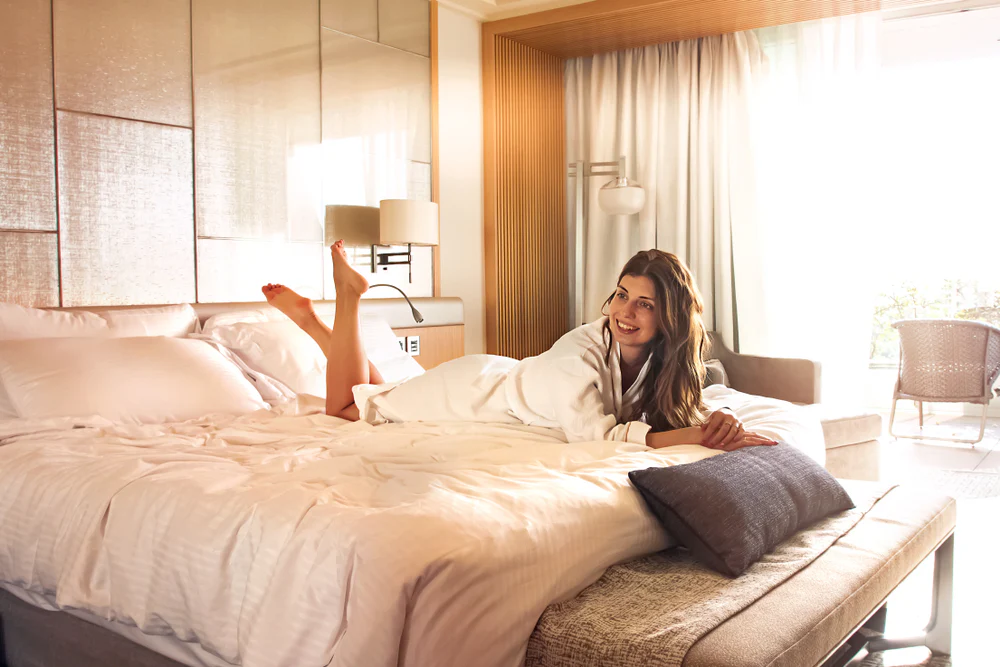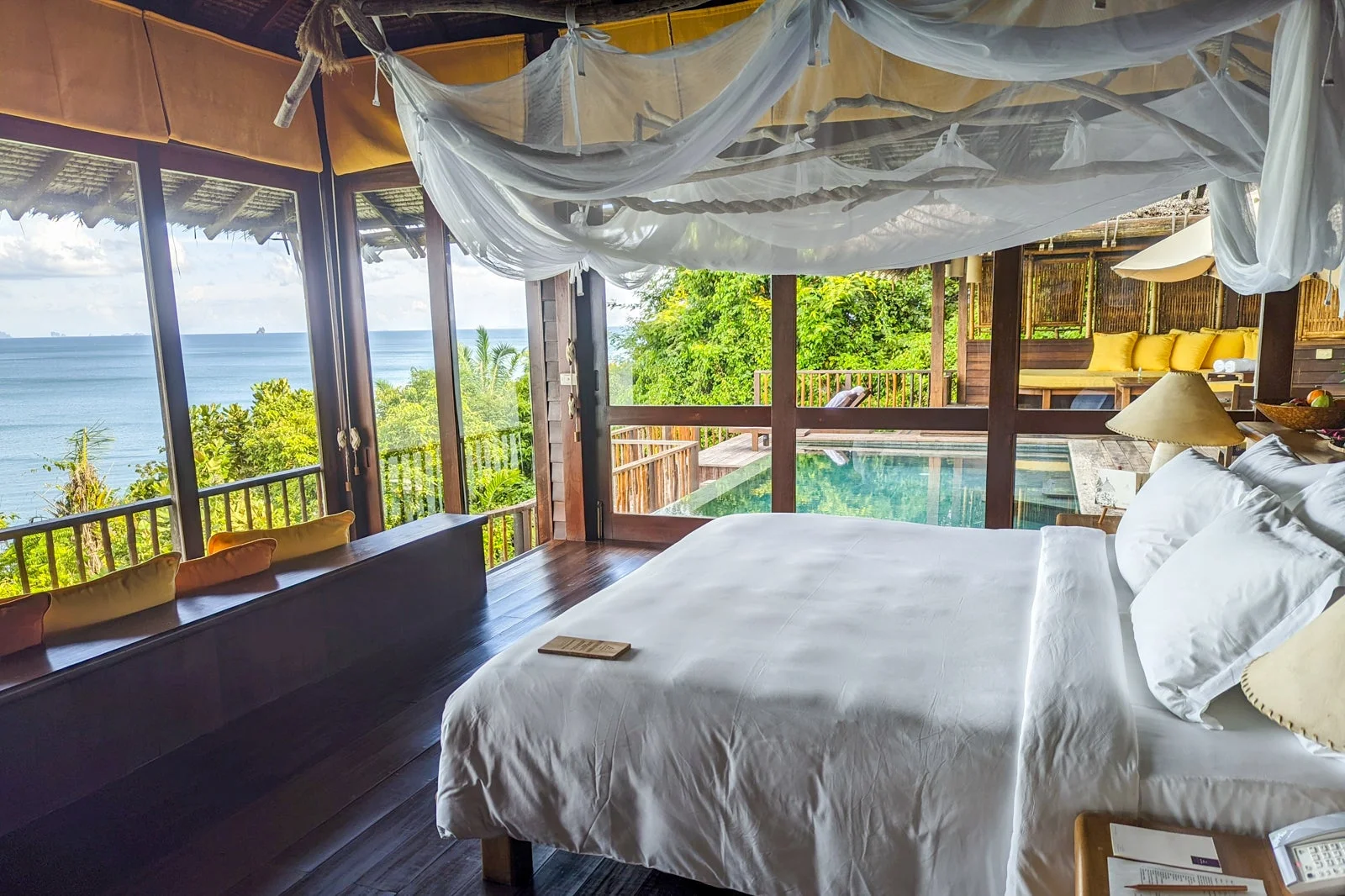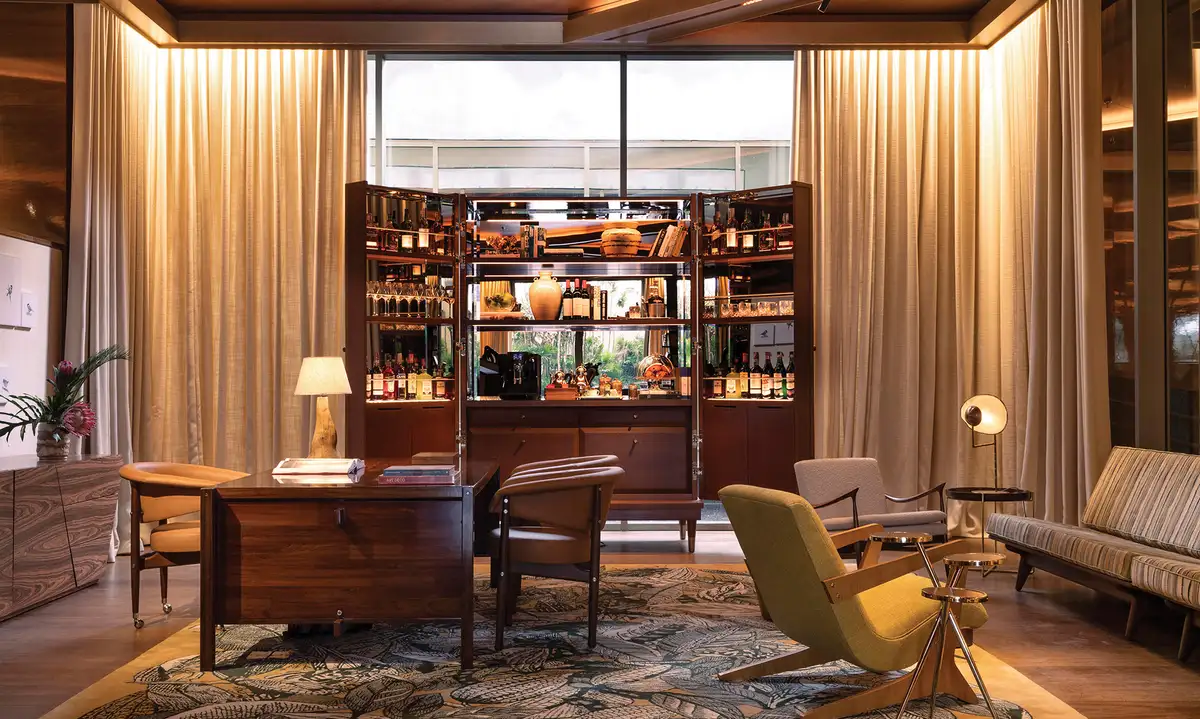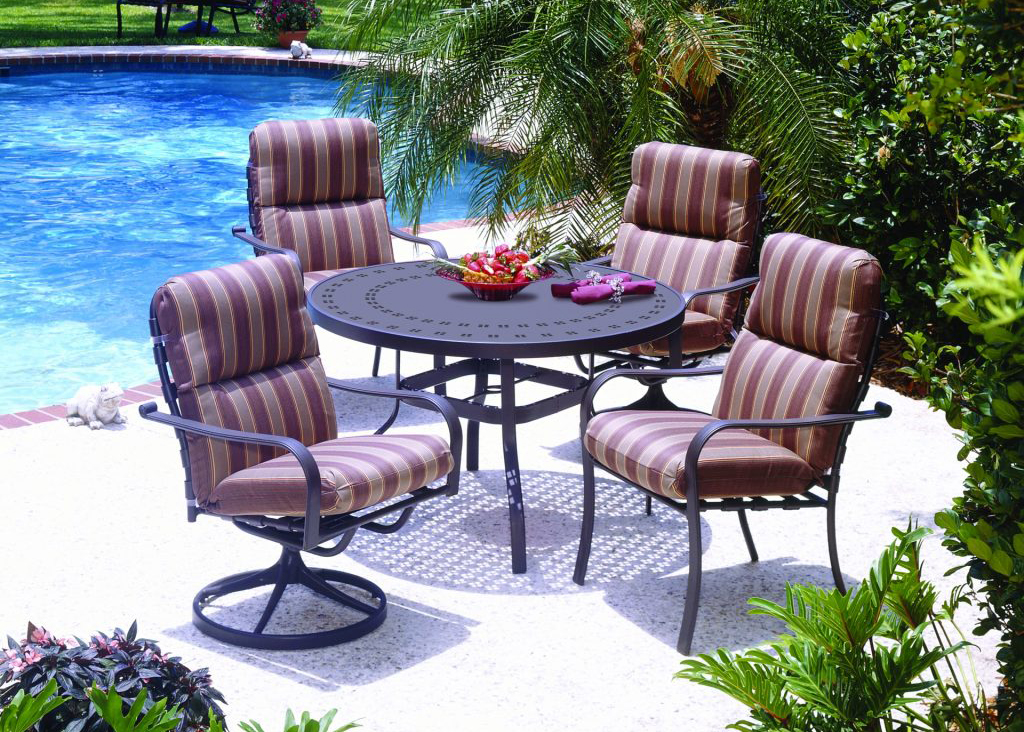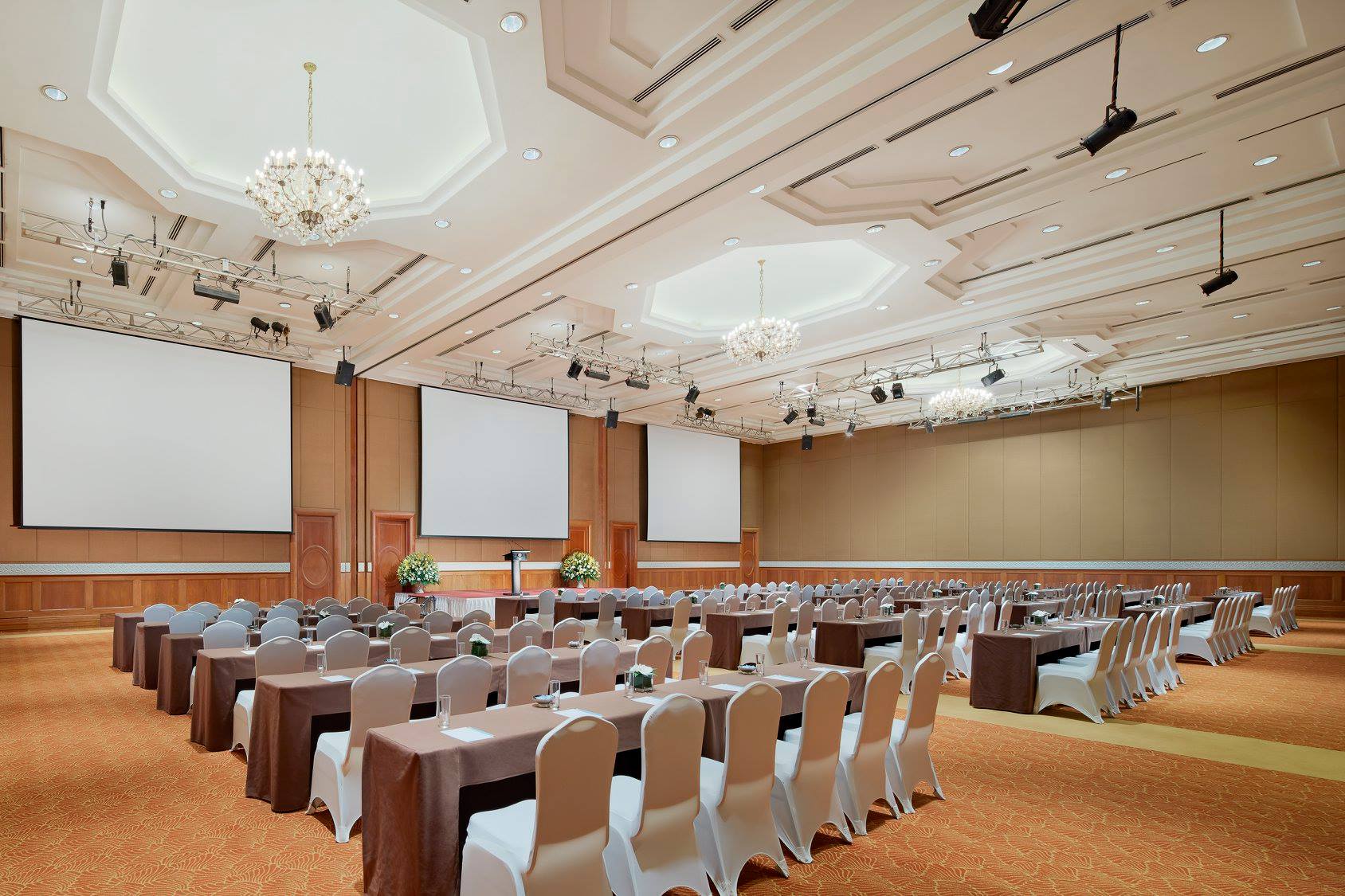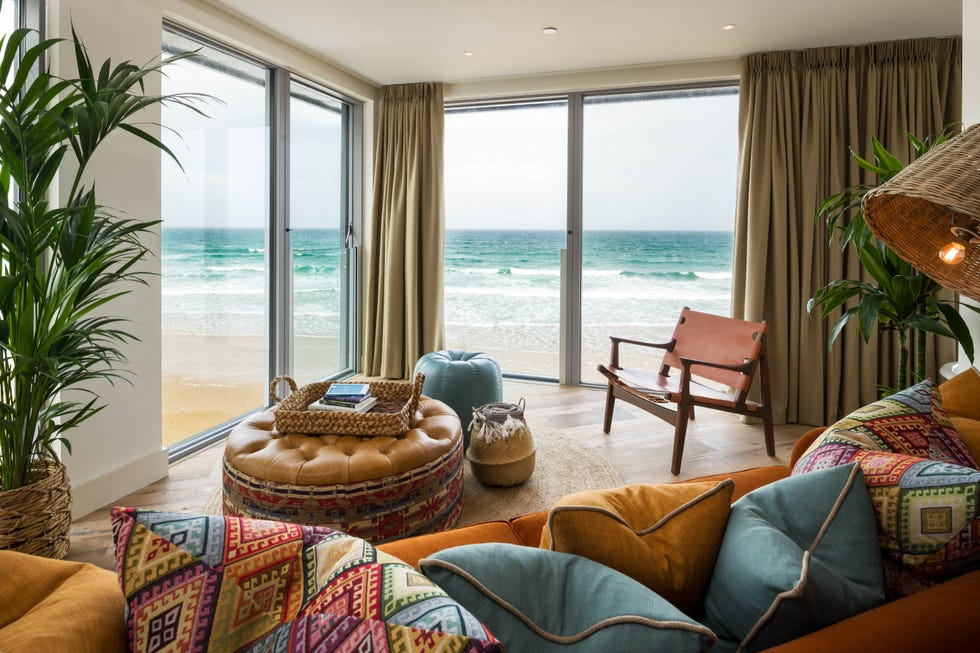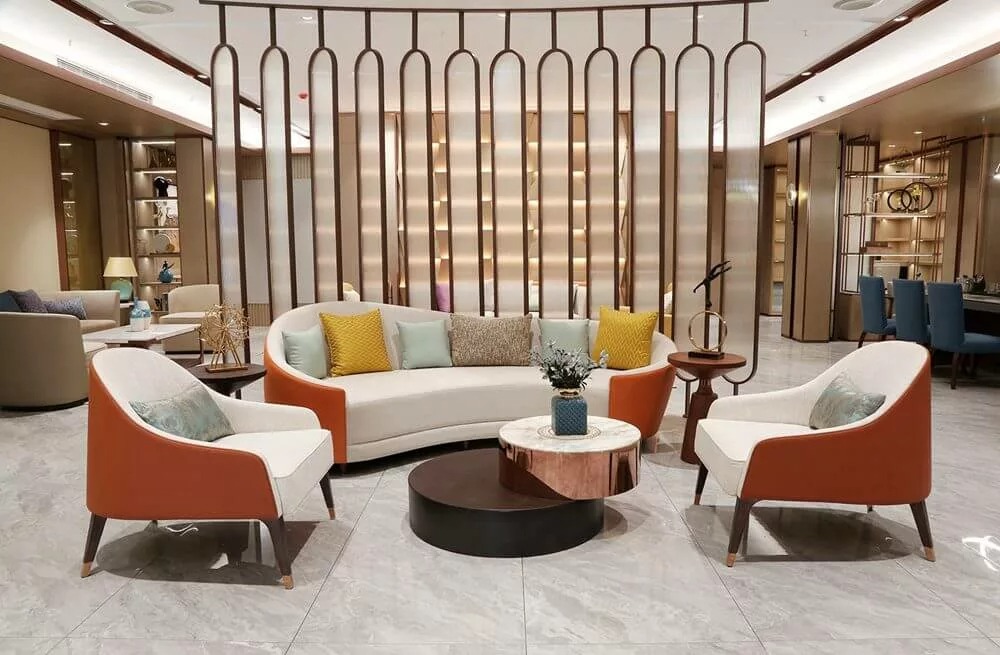Designing Hotel Room Workspaces for Comfort and Subtle Elegance
Thứ 4, 12/11/2025
Administrator
12
Today’s hotel guests often balance work and leisure, turning their room into a multifunctional environment. A well-designed desk and chair arrangement ensures productivity without disrupting the calm atmosphere of the space. In this article, Ngoc Hoang Anh shares insights on creating elegant, ergonomic hotel workspaces that reflect true hospitality.
1. The Modern Hotel Room as a Hybrid Space
The modern hotel room has evolved beyond a place to rest; it is now a flexible environment where work, relaxation, and lifestyle merge seamlessly. This transformation reflects the expectations of contemporary travelers who value comfort, convenience, and style within the same private space.
1.1 Redefining the Purpose of Guestrooms
Today’s hospitality design must accommodate both leisure and productivity. Business travelers expect efficient workspaces, while leisure guests appreciate subtle conveniences such as a well-placed desk for reading or digital use. The modern guestroom is a hybrid zone built for all purposes.
1.2 Understanding Guest Needs and Behavior
Guests spend more time in their rooms than ever before, often multitasking between meetings and relaxation. Ergonomic setups, accessible power sources, and intuitive layouts help them work efficiently without compromising the sense of retreat that a hotel room should provide.
1.3 Balancing Relaxation and Productivity
True hospitality design finds equilibrium between focus and comfort. A workspace that blends softly into the sleeping area allows the guest to shift between concentration and rest with ease. This subtle transition is what distinguishes thoughtful interior planning from ordinary room layout.
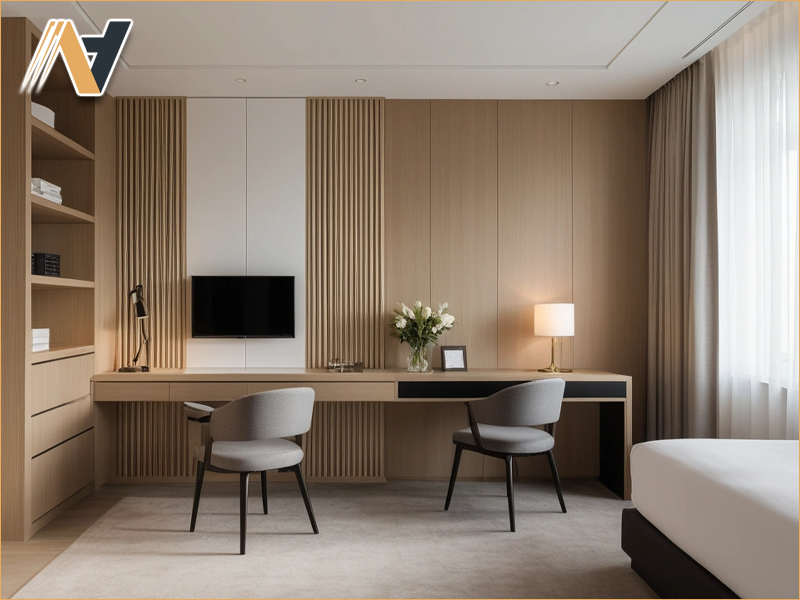
2. Ergonomic Principles in Workspace Furniture
A well-designed workspace must support both the body and the mind. Ergonomics is not just about measurement but about creating balance between comfort, efficiency, and style. In hospitality environments, furniture must adapt to diverse users while preserving the sense of calm and elegance expected in a premium guestroom.
2.1 Standard Dimensions and Clearances
Proper height and spacing ensure natural posture and freedom of movement. A desk positioned around 72–75 cm in height with sufficient legroom allows guests of varying body types to work comfortably without strain or fatigue.
2.2 Supportive Chair Design for Extended Use
Hotel chairs require stability, ergonomic curves, and premium cushioning that support extended sitting periods. Quality upholstery and a slightly reclined backrest promote good posture while maintaining visual harmony with the room’s design language.
2.3 Integrating Power Access and Cable Management
Incorporating built-in power outlets, USB ports, and discreet cable routing enhances convenience and safety. Well-planned integration avoids clutter, ensuring the workspace remains elegant, functional, and aligned with the aesthetics of modern hospitality interiors.
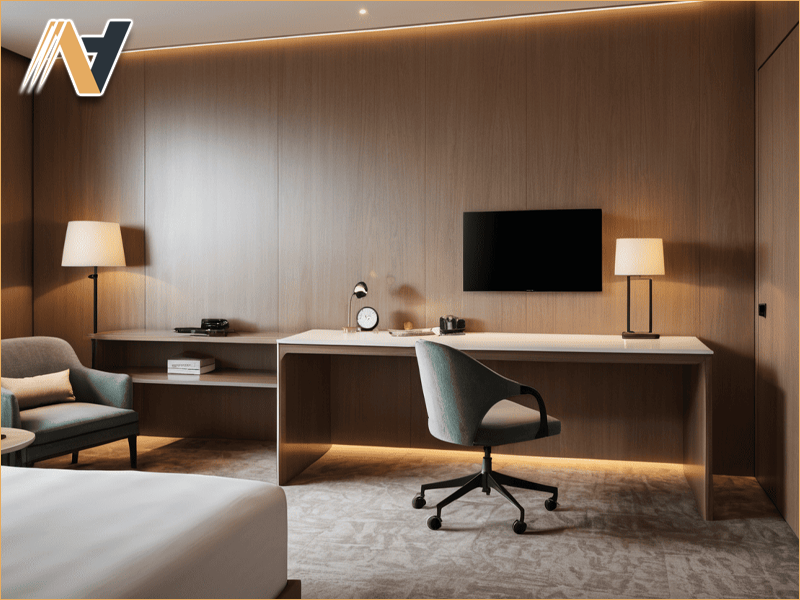
3. Materials and Aesthetic Coordination
The materials used in hotel workspaces must balance strength and sophistication. Each surface, finish, and color choice contributes to how the room feels and performs over time. When carefully coordinated, these elements express quality, durability, and quiet luxury that enhance the overall guest experience.
3.1 Durable Materials for High-Traffic Use
Hotel desks and chairs endure frequent use, so durability is essential. Engineered wood with high-pressure laminate, metal accents, or solid veneer surfaces provide longevity without compromising elegance, ensuring the furniture retains its visual appeal through daily wear.
3.2 Visual Continuity with the Bed and Wardrobe
A harmonious material palette ties the workspace into the rest of the room. Matching veneers, consistent metal finishes, and soft color transitions create a unified environment that reflects the hotel’s design concept and brand character.
3.3 Tactile Surfaces and Refined Finishes
Textures influence how guests perceive comfort. Smooth matte lacquers, brushed metal handles, and soft fabric details enhance touch and visual warmth. These subtle refinements elevate ordinary furniture into a statement of crafted sophistication.
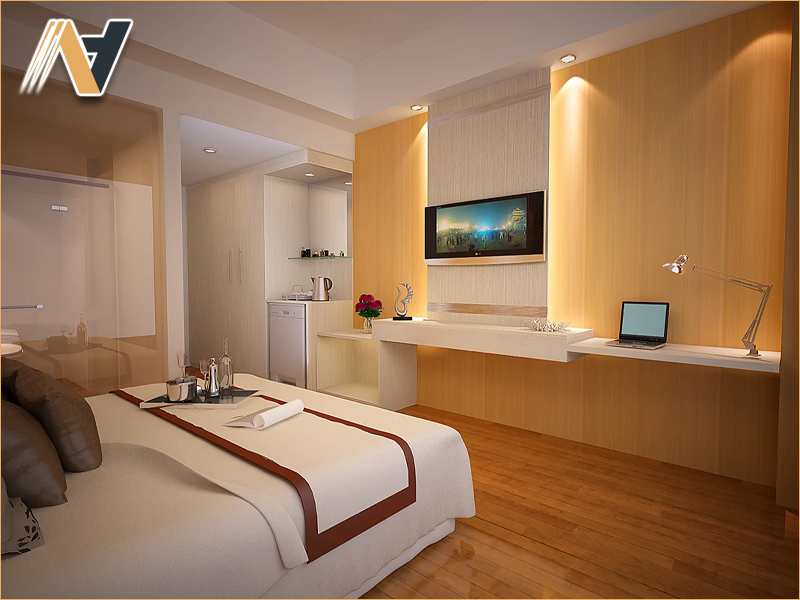
4. Spatial Layout and Lighting Integration
The positioning of the desk and chair influences how guests interact with the entire room. Good layout planning supports comfort, movement, and atmosphere. When light, proportion, and flow align, the workspace becomes both functional and emotionally inviting.
4.1 Positioning the Desk within the Room
The ideal desk placement allows guests to work comfortably while staying visually connected to the room’s design. Positioning near a window enhances daylight and view, while maintaining distance from the bed preserves spatial balance and privacy.
4.2 Using Natural Light and View Orientation
Natural light enhances focus and well-being. Orienting the desk toward soft daylight prevents glare and reduces eye strain. For evening use, the view outside creates a calming backdrop, reinforcing the sense of openness and rest.
4.3 Ambient and Task Lighting Design
Layered lighting ensures flexibility. A task lamp provides focused brightness for productivity, while ambient or wall-mounted fixtures add warmth for a relaxed transition from work to leisure. The interplay of both types defines the overall mood.
4.4 Creating Visual Separation without Clutter
Subtle spatial cues can distinguish the workspace from the resting zone. A shift in material tone, a small rug, or a decorative panel creates gentle boundaries while keeping the room cohesive and uncluttered.
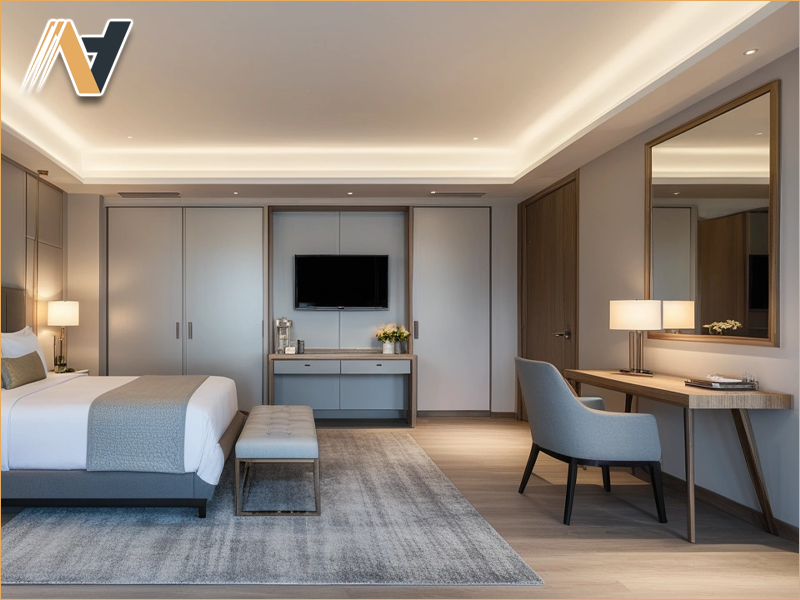
5. Customization and OEM Production Solutions
Every hotel seeks to express its own identity through interior details. Custom workspace furniture allows that individuality to shine while maintaining operational efficiency. When designed and produced with precision, these pieces become lasting reflections of the brand’s quality and care.
5.1 Adapting Desk and Chair Designs to Hotel Concepts
Tailoring workspace furniture to match the property’s concept ensures both aesthetic and functional consistency. A tropical resort might prefer natural veneers and woven textures, while a business hotel benefits from sleek metal accents and minimalist geometry.
5.2 OEM Flexibility and Material Expertise by Ngoc Hoang Anh
Through advanced OEM production, Ngoc Hoang Anh delivers customized desk and chair solutions with exacting standards. From material sourcing to finishing details, each product combines durability, comfort, and design alignment across entire hospitality collections.
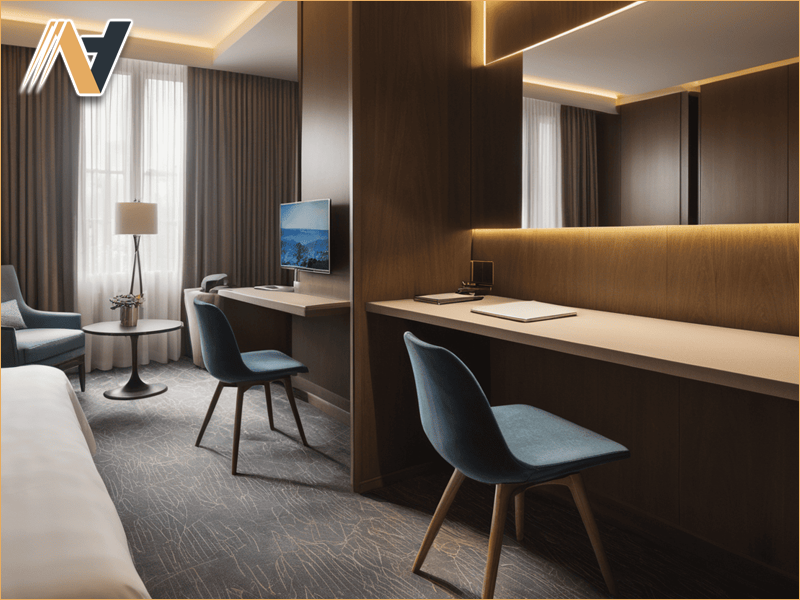
Conclusion
Hotel workspace design is no longer secondary; it defines how guests live and work in harmony. When ergonomic function meets aesthetic balance, the desk and chair become symbols of quiet luxury. For projects seeking refined craftsmanship and tailored production, Ngoc Hoang Anh provides expert Vietnam hotel furniture OEM solutions that combine design intelligence, comfort, and durability.
Contact us today for professional consultation and high-quality production support for your hospitality project.
-----
NGOC HOANG ANH TRADING COMPANY LIMITED
Tax Code: 3702874413
Address: No. 288/28/10 Huynh Van Luy Street, Zone 7, Phu Loi Ward, Ho Chi Minh City, Vietnam
Warehouse: No. 1/91, Thuan Giao 02 Street, Binh Thuan 2 Residential Quarter, Thuan Giao Ward, Ho Chi Minh City, Vietnam
Phone/Whatsapp/Wechat: +84342076666
Email: info@ngochoanganh.com.vn



